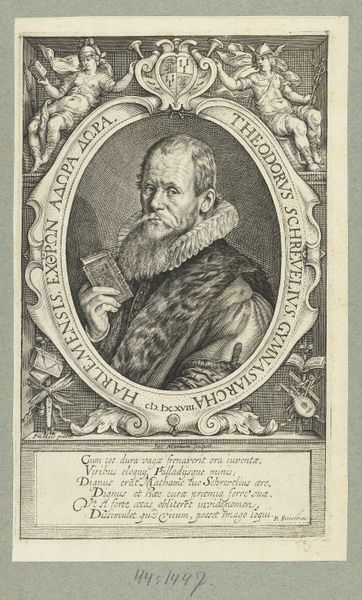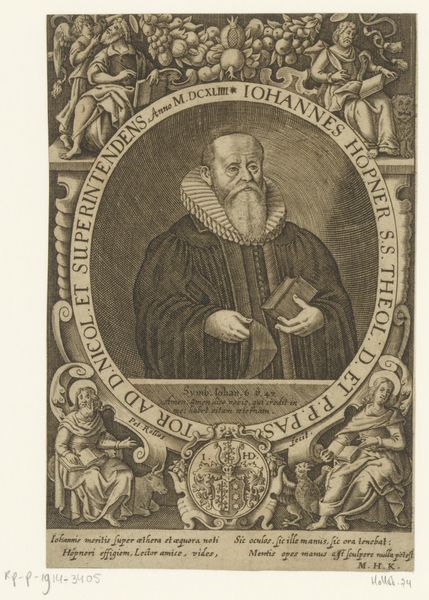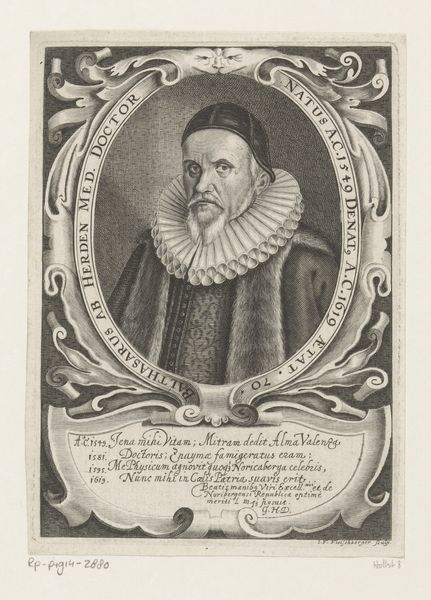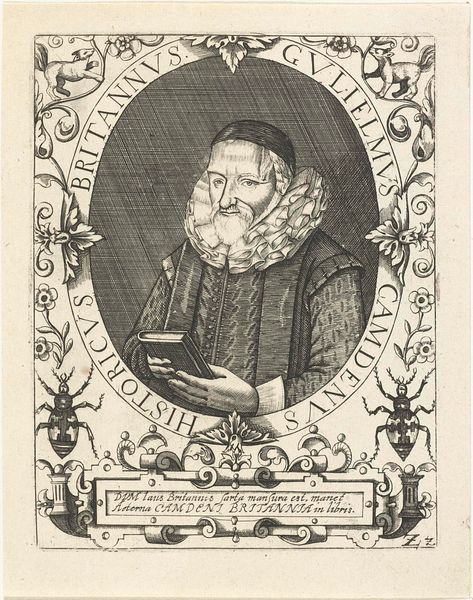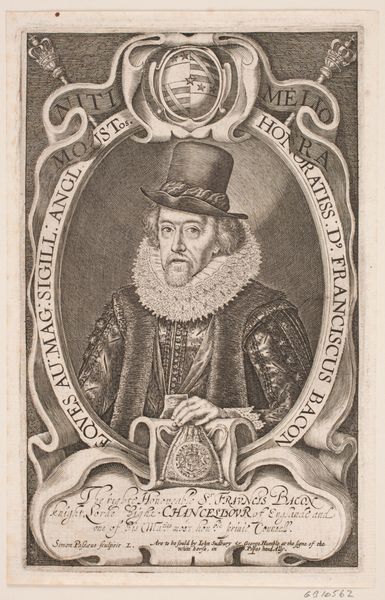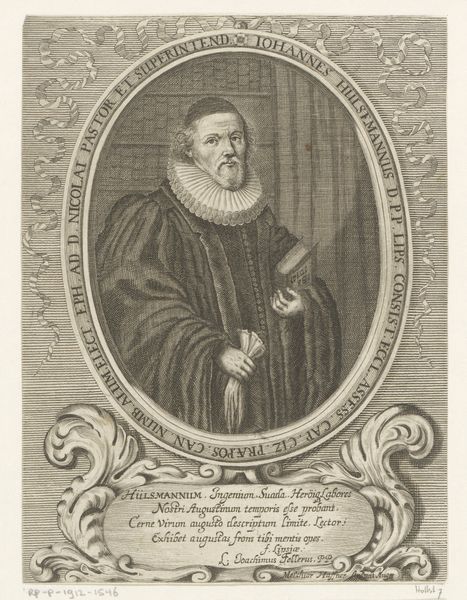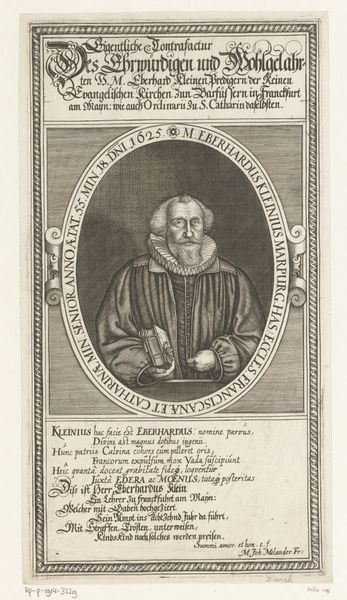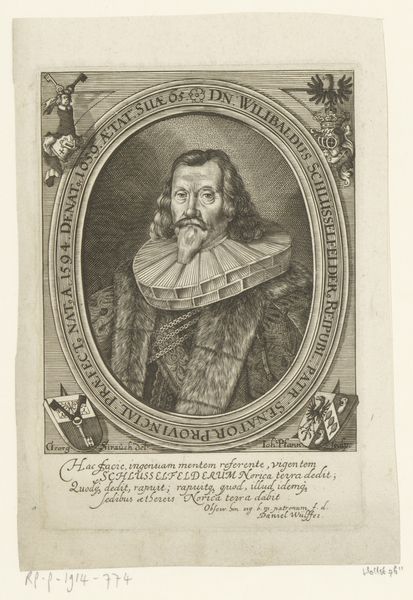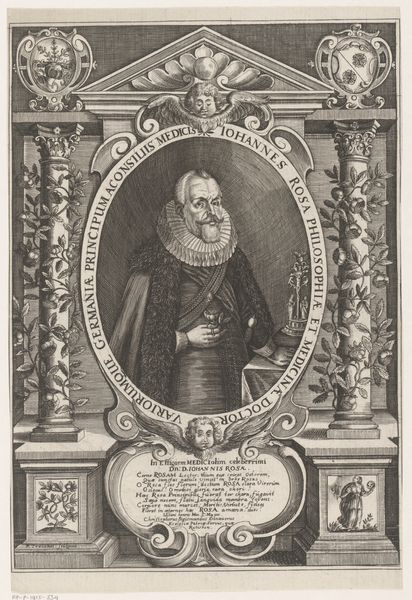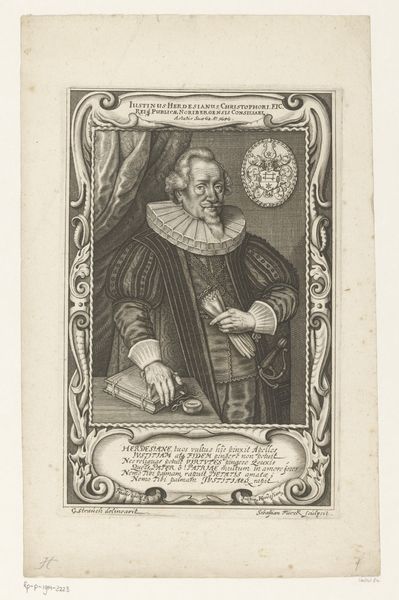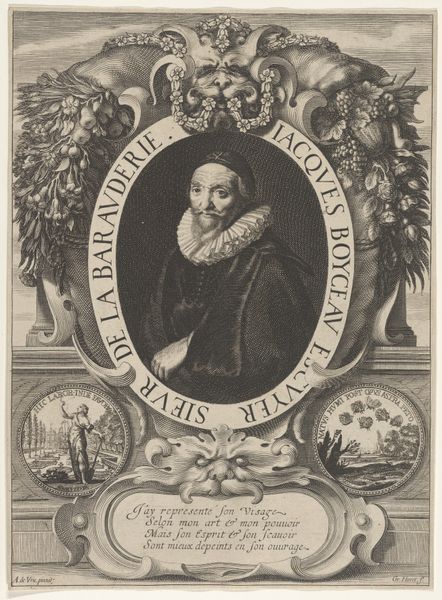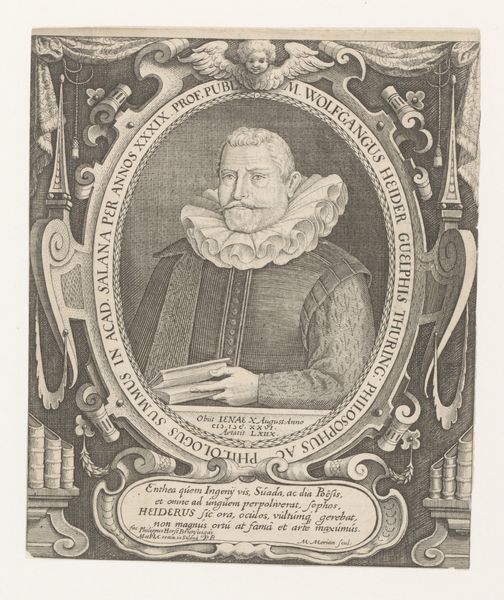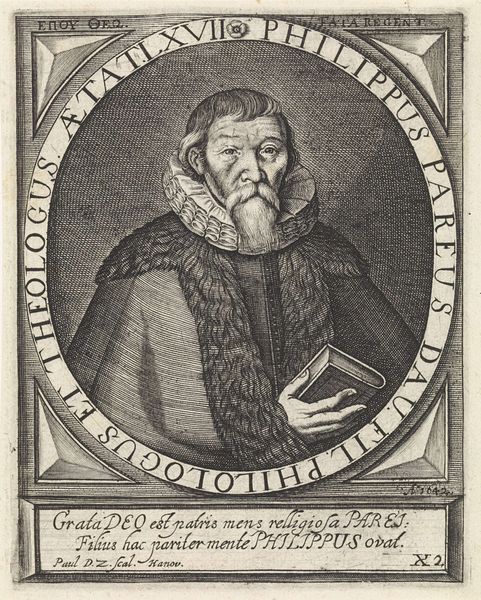
print, engraving
#
portrait
#
baroque
# print
#
history-painting
#
engraving
Dimensions: 197 mm (height) x 116 mm (width) (plademaal)
Simon de Pas produced this engraving of George Villiers, Duke of Buckingham, sometime in the early 17th century. Engravings like these were important means of circulating images of powerful men at the time. Villiers was a controversial figure, rising to prominence as a favorite of King James I, and later wielding significant influence under Charles I. This image presents Villiers in a way that reinforces his status and legitimacy. The elaborate frame includes symbols of nobility, such as a coat of arms, cherubs, and Latin inscriptions praising his virtues. The detailed rendering of his clothing and refined features further emphasizes his wealth and power. The engraving, as a medium, played a crucial role in shaping public perceptions of individuals like Villiers. These images were not simply neutral portraits, but carefully constructed representations intended to project a particular image. To understand the full significance of this image, we can consult primary sources such as letters and state papers and study the history of portraiture in England. Such research can reveal the complex social and political context in which this image was created and consumed.
Comments
No comments
Be the first to comment and join the conversation on the ultimate creative platform.
